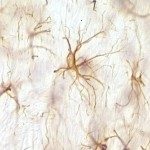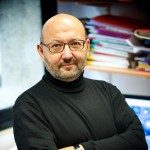Lien vers Pubmed [PMID] – 18809668
Infect. Immun. 2008 Dec;76(12):5565-80
In the Saimiri sciureus monkey, erythrocytes infected with the varO antigenic variant of the Plasmodium falciparum Palo Alto 89F5 clone bind uninfected red blood cells (rosetting), form autoagglutinates, and have a high multiplication rate, three phenotypic characteristics that are associated with severe malaria in human patients. We report here that varO parasites express a var gene having the characteristics of group A var genes, and we show that the varO Duffy binding-like 1alpha(1) (DBL1alpha(1)) domain is implicated in the rosetting of both S. sciureus and human erythrocytes. The soluble varO N-terminal sequence (NTS)-DBL1alpha(1) recombinant domain, produced in a baculovirus-insect cell system, induced high titers of antibodies that reacted with varO-infected red blood cells and disrupted varO rosettes. varO parasites were culture adapted in vitro using human erythrocytes. They formed rosettes and autoagglutinates, and they had the same surface serotype and expressed the same varO gene as the monkey-propagated parasites. To develop an in vitro model with highly homogeneous varO parasites, rosette purification was combined with positive selection by panning with a varO NTS-DBL1alpha(1)-specific mouse monoclonal antibody. The single-variant, clonal parasites were used to analyze seroprevalence for varO at the village level in a setting where malaria is holoendemic (Dielmo, Senegal). We found 93.6% (95% confidence interval, 89.7 to 96.4%) seroprevalence for varO surface-reacting antibodies and 86.7% (95% confidence interval, 82.8 to 91.6%) seroprevalence for the recombinant NTS-DBL1alpha(1) domain, and virtually all permanent residents had seroconverted by the age of 5 years. These data imply that the varO model is a relevant in vivo and in vitro model for rosetting and autoagglutination that can be used for rational development of vaccine candidates and therapeutic strategies aimed at preventing malaria pathology.


